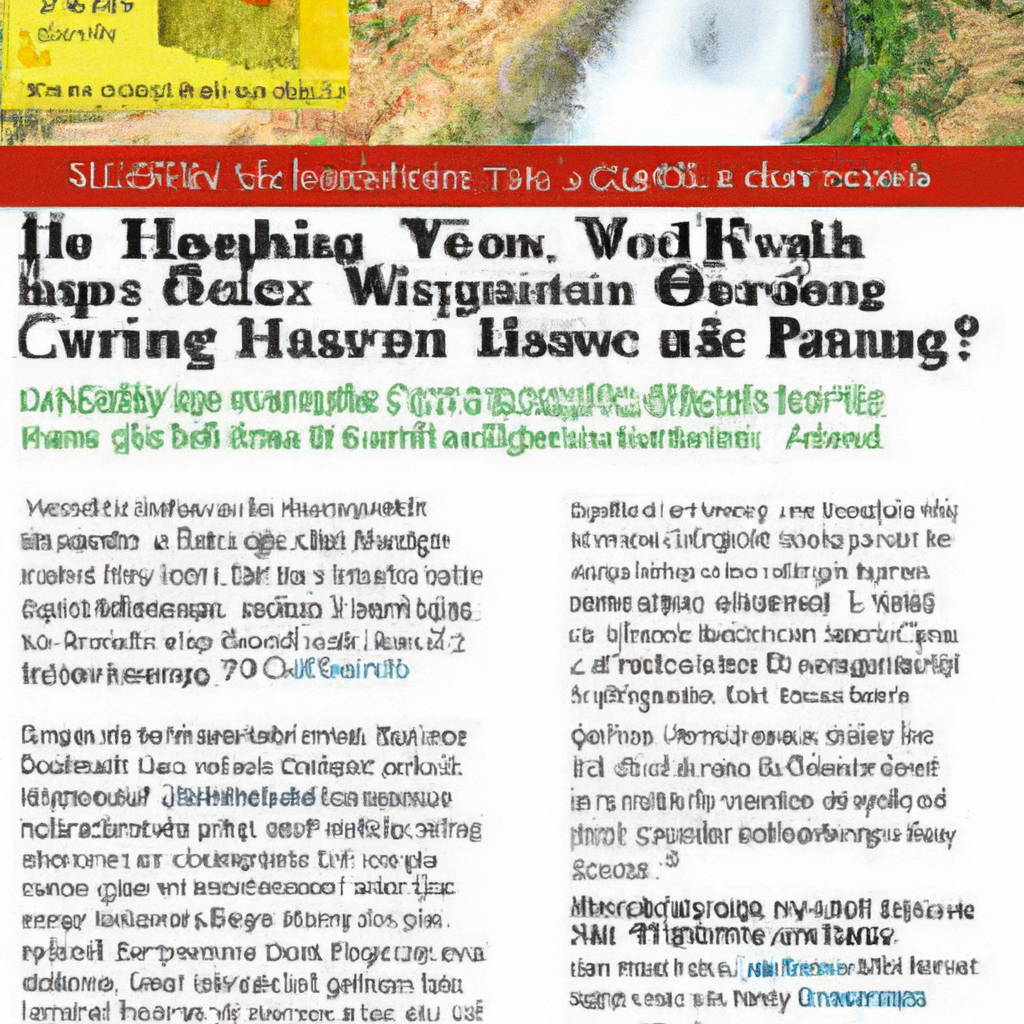Imagine having your very own private oasis tucked away in the picturesque mountains of Colorado. A place where the healing powers of nature invigorate your body and soul, and the soothing warmth of a hot spring eases your worries away. Sounds enticing, doesn̵7;t it? Well, the possibility of privatizing a hot spring in Colorado for personal use is something that’s been piquing the curiosity of many. In this article, we’ll explore this intriguing idea and delve into the various aspects surrounding it.
I. Overview of Hot Springs in Colorado
Colorado is known for its stunning natural beauty and outdoor recreational opportunities, and hot springs are a popular attraction for both residents and tourists. These natural geothermal features offer a unique way to relax and rejuvenate, with their warm mineral-rich waters providing numerous health benefits. This article will explore the possibility of privatizing a hot spring in Colorado for personal use, examining the benefits and drawbacks, legal and environmental considerations, and alternative approaches.

A. Introduction to Hot Springs
Hot springs are natural geological formations where hot water from the Earth’s crust rises to the surface, often carrying with it minerals and other beneficial elements. These thermal waters have been revered for centuries for their soothing and healing properties. In Colorado, hot springs are found in various locations, ranging from high mountain regions to lower elevations. These hot springs offer an escape from the hustle and bustle of daily life, providing an opportunity to connect with nature and find tranquility.
B. Popular Hot Springs in Colorado
Colorado boasts numerous hot springs that are popular among tourists and locals alike. Some of the well-known hot springs in the state include Strawberry Park Hot Springs near Steamboat Springs, Glenwood Hot Springs in Glenwood Springs, and Mount Princeton Hot Springs in Nathrop. These hot springs offer a range of amenities and experiences, from natural pools nestled in scenic landscapes to more developed facilities with spa services and accommodations. They attract visitors seeking relaxation, therapeutic benefits, and a unique outdoor experience.
II. Understanding Privatization of Hot Springs
A. Definition of Privatization
Privatization refers to the transfer of ownership, control, or management of a public resource or service to the private sector. In the context of hot springs, privatization would involve the acquisition and exclusive use of a hot spring by an individual, organization, or company for personal or commercial purposes. This would mean limiting public access and reserving the hot spring for the private owner’s use or for a specified group of individuals.
B. Privatization of Natural Resources
Privatization of natural resources is a complex issue that has both proponents and critics. Supporters argue that privatizing hot springs can bring various benefits, such as improved management, increased investment, and better facilities. They believe that private ownership can lead to more efficient use of the resource and the development of amenities that enhance the visitor experience.
On the other hand, opponents express concerns about the potential negative impacts of privatization. They argue that it can lead to exclusion and limited access for the general public, undermining the idea of shared ownership and enjoyment of natural resources. They are also wary of the potential commercialization and exploitation of hot springs, potentially compromising their ecological integrity and cultural significance.
III. Exploring the Benefits of Privatizing a Hot Spring
A. Increased Access and Availability
Privatizing a hot spring can potentially increase access and availability for those who become part of the private ownership or membership. By limiting the number of visitors, overcrowding and excessive wear and tear can be minimized, allowing for a more enjoyable experience. Furthermore, private owners may be motivated to invest in infrastructure, facilities, and services that enhance accessibility, making hot springs more accessible to individuals who may have special needs or require additional accommodations.
B. Customization and Personalization of Facilities
Privatization allows for greater customization and personalization of hot spring facilities. Private owners have the flexibility to design and develop amenities that cater to specific preferences and needs, such as private pools, spa services, or unique activities. This level of customization can enhance the overall experience and attract a broader range of visitors, from wellness enthusiasts looking for luxury offerings to families seeking a unique getaway.
C. Economic Opportunities and Revenue Generation
Privatizing a hot spring can create economic opportunities and generate revenue for the local community. Private owners may invest in infrastructure development, which can stimulate the local economy through job creation, increased visitor spending, and tax revenues. Additionally, private ownership can attract investment from hospitality and tourism industries, leading to the development of complementary businesses such as hotels, restaurants, and retail establishments. This, in turn, can contribute to the overall economic growth and sustainability of the area.
IV. Legal and Environmental Considerations
A. Regulatory Framework and Permits
Privatizing a hot spring involves navigating a complex regulatory framework and obtaining the necessary permits and approvals. Depending on the location and specific circumstances, a range of federal, state, and local regulations may apply. These may include water rights, land use permits, health and safety regulations, zoning requirements, and environmental assessments. It is crucial to engage with the relevant authorities and seek legal guidance throughout the process to ensure compliance with applicable laws and regulations.
B. Environmental Impact Assessments
One essential aspect of privatizing a hot spring is conducting thorough environmental impact assessments to evaluate potential ecological consequences. Hot springs are unique ecosystems with delicate balances that can be disrupted by human activities. It is essential to assess the potential impacts of privatization, such as water quality degradation, habitat disruption, or alteration of natural flow patterns. Mitigation measures should be considered to minimize negative impacts and maintain the long-term sustainability of the hot spring and its surrounding environment.
C. Conservation and Sustainability Measures
Privatization should be accompanied by robust conservation and sustainability measures to protect the natural integrity of the hot spring. This may include monitoring water usage and quality, implementing wastewater treatment systems, reducing energy consumption, and adopting practices that minimize ecological impacts. By prioritizing conservation and sustainable practices, private owners can ensure the long-term viability of the hot spring and contribute to the preservation of the local environment.
V. Challenges and Potential Drawbacks
A. Equity and Accessibility Concerns
One significant challenge associated with privatization is the potential for inequity and limited access. When a hot spring becomes privately owned, the general public may no longer have the same level of accessibility or affordability. This raises concerns about social and economic exclusivity, as hot springs could become exclusive retreats for the privileged few. Efforts must be made to strike a balance between private ownership and maintaining public access to these natural resources.
B. Impact on Natural Ecosystem
Privatization can pose risks to the natural ecosystem surrounding a hot spring. Human activities, increased infrastructure development, and higher visitor numbers associated with privatization can lead to habitat degradation, species displacement, land erosion, and water pollution. Private owners must prioritize environmental stewardship, implementing measures to minimize these impacts and preserve the ecological integrity of the hot spring and its surroundings.
C. Community Opposition and Public Perception
The privatization of a hot spring can generate opposition from the local community and the general public. Concerns may arise regarding the loss of public access, environmental impacts, or the potential commodification of a natural resource. It is essential to engage in open and transparent dialogue with stakeholders, addressing their concerns and seeking their input throughout the privatization process. Building trust and maintaining good public relations can help mitigate opposition and promote a positive public perception.
VI. Case Studies of Privatized Hot Springs
A. Examples from Other Locations
Several privately owned hot springs around the world can provide valuable insights into the potential benefits and challenges of privatization. Examples include Terme di Saturnia in Tuscany, Italy, where a privately owned spa resort has successfully integrated natural hot springs into its offerings. Another example is Dunton Hot Springs in Colorado, which offers an exclusive resort experience centered around its natural hot springs. By examining these case studies, valuable lessons can be learned to inform the privatization process in Colorado.

B. Lessons Learned and Best Practices
The case studies mentioned above highlight the importance of responsible management, community engagement, and environmental stewardship in the privatization of hot springs. Lessons learned from these examples include the need for sustainable practices, collaborative partnerships with local communities, and a commitment to preserving the natural and cultural heritage associated with hot springs. These best practices can serve as a guide for future privatization initiatives, ensuring the long-term success and sustainability of privately owned hot springs.
VII. Exploring Alternatives to Privatization
A. Public-Private Partnerships
Privatization is not the only approach to enhancing hot springs. Public-private partnerships (PPPs) can be a viable alternative that allows for collaboration between the public and private sectors. In a PPP, the government retains ownership or control of the hot spring, while a private entity manages the operations, infrastructure development, and visitor services. This approach can balance the need for private investment and expertise while maintaining public access, affordability, and democratic decision-making.
B. Community Ownership and Management
Another alternative to privatization is community ownership and management of hot springs. This model involves the formation of community cooperatives or nonprofits to acquire and oversee the hot spring’s operations. Community ownership ensures that the interests and needs of the local residents are considered, promoting inclusivity and democratic decision-making. This approach can foster a sense of ownership and pride among community members while retaining public access and involvement.
VIII. Steps for Privatizing a Hot Spring in Colorado
A. Feasibility Study and Business Plan
Before proceeding with privatization, a comprehensive feasibility study and business plan should be developed. This includes assessing the market demand, financial viability, and potential revenue streams. A well-executed feasibility study will provide critical insights into the economic, environmental, and social aspects of privatization, helping to inform decision-making and garner support from stakeholders.
B. Engaging Stakeholders and Seeking Support
Engaging stakeholders, such as local communities, environmental organizations, and relevant government agencies, is crucial for a successful privatization process. Open and transparent communication, consultations, and public hearings should be conducted to address concerns, gather feedback, and build consensus. Seeking support from influential community members, industry experts, and policymakers can also help navigate potential hurdles and ensure the process’s legitimacy.
C. Legal and Financial Considerations
Privatization involves navigating a complex legal landscape, requiring expertise in property law, permits, zoning regulations, and contractual agreements. Engaging legal professionals with experience in this area will help ensure compliance and mitigate legal risks. Financial considerations should also be carefully assessed, involving comprehensive cost-benefit analyses, revenue projections, and funding strategies. This includes exploring potential financing options, such as loans, grants, or private investments.
D. Design and Development Process
The design and development process of a privatized hot spring should align with its intended purpose and target market. This may involve engaging architects, engineers, and other professionals specializing in environmental design, spa development, accommodation facilities, and landscape architecture. Attention should be given to creating a sustainable, aesthetically pleasing environment that integrates seamlessly with the natural surroundings, respecting the unique characteristics of the hot spring.
IX. Impact on the Local Community and Economy
A. Job Creation and Economic Growth
Privatizing a hot spring can have a positive impact on the local community by creating job opportunities and stimulating economic growth. The development and operation of a privately owned hot spring can generate employment in various sectors, such as hospitality, tourism, maintenance, and administration. These jobs provide local residents with steady income and contribute to the overall economic well-being of the community.
B. Tourism and Reputation Building
Privatized hot springs can attract tourists, thereby bringing economic benefits to the local area. A well-designed and well-managed hot spring destination can become a sought-after tourist attraction, drawing visitors from near and far. This influx of tourists not only contributes to the local economy but also helps build the reputation of the community as a destination for relaxation, wellness, and natural beauty.
C. Infrastructure Development and Improvement
Privatization of a hot spring often involves significant investments in infrastructure development and improvement. This can result in upgrading roads, utilities, parking facilities, and visitor amenities. These enhancements not only benefit the privately owned hot spring but also improve the overall infrastructure of the region. The local community may also enjoy improved access to services and amenities that come with the development of a privatized hot spring.
X. Conclusion and Recommendations
A. Summary of Findings
The possibility of privatizing a hot spring in Colorado for personal use entails various benefits and challenges. Privatization can increase access and availability, allow for customization and personalization of facilities, and create economic opportunities. However, equity and accessibility concerns, potential environmental impacts, and community opposition must be carefully addressed throughout the privatization process. Alternatives to privatization, such as public-private partnerships and community ownership, should also be considered.
B. Recommendations for Future Action
Based on the comprehensive exploration of the topic, several recommendations can be made for individuals or organizations considering privatizing a hot spring in Colorado. It is important to conduct thorough feasibility studies, engage with stakeholders, and seek legal and financial guidance. Emphasizing environmental stewardship, community involvement, and sustainability is pivotal for long-term success. Exploring alternatives to full privatization, such as public-private partnerships or community ownership, can also be worthwhile avenues to pursue. Ultimately, any decision regarding privatization should prioritize the preservation of the hot spring’s natural and cultural significance while balancing economic and social considerations.
